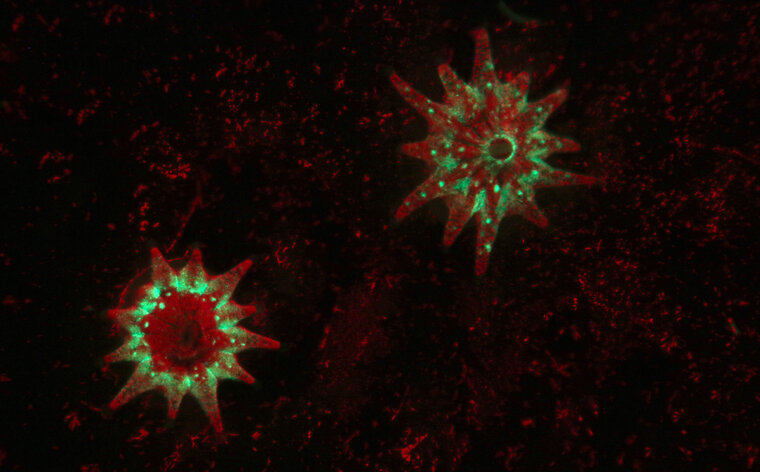
Editors’ Choice and People’s Choice 2022
To better understand a critical species in global decline at a critical stage of its developmental life cycle, researchers photographed a one-month-old great star coral polyp (Montastraea cavernosa), about one millimeter in size, under blue light to show fluorescence. The green fluorescence is due to proteins produced by the coral, while the red fluorescence proteins are produced by the symbiotic algae living inside of the coral tissues.
Graduate student Daisy Flores took this image in the field through a microscope while working in Curacao at the Caribbean Research and Management of Biodiversity (CARMABI) Research Station. There she observed spawning, collected gametes and reared larvae of eight spawning coral species. Newly settled coral polyps are very small, even at one month old they are barely as large as your credit card is thick.
Credit:
Daisy Flores
Ecology, Evolution and Behavior Graduate Student




